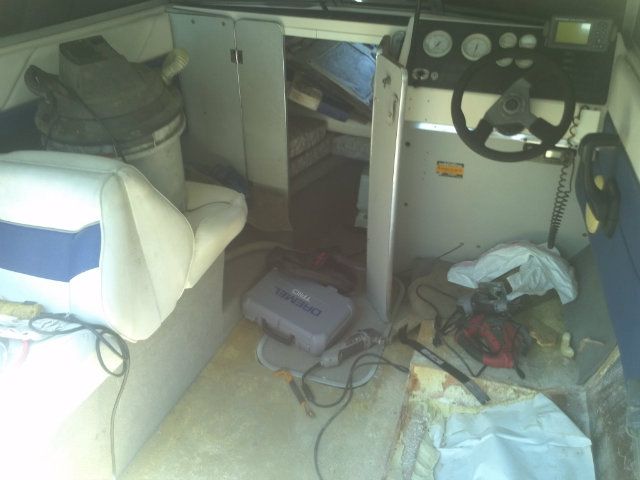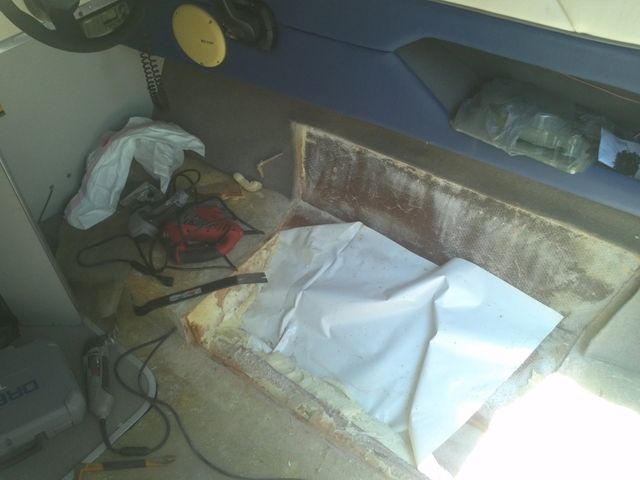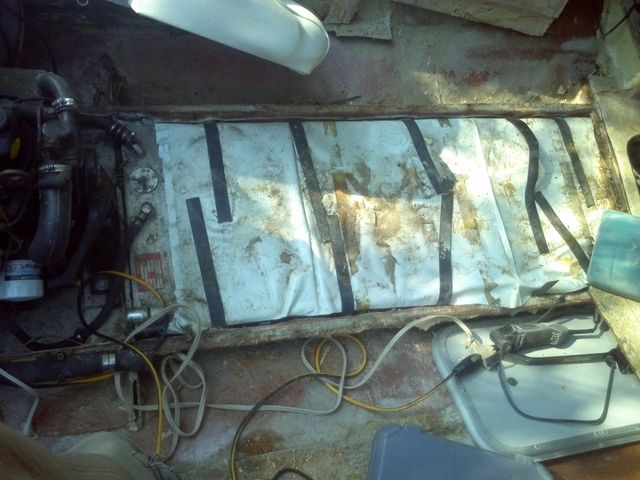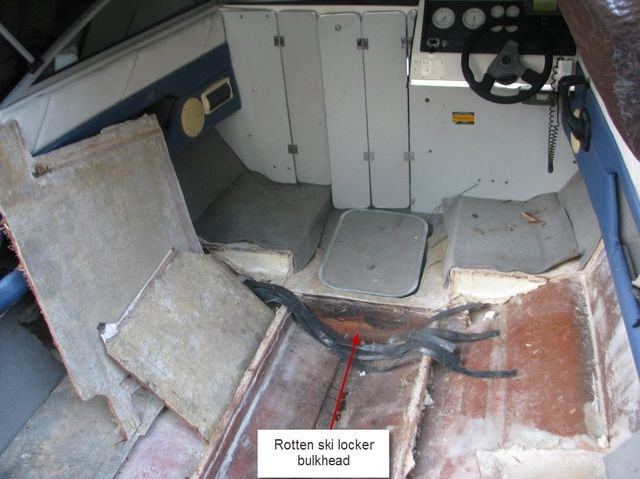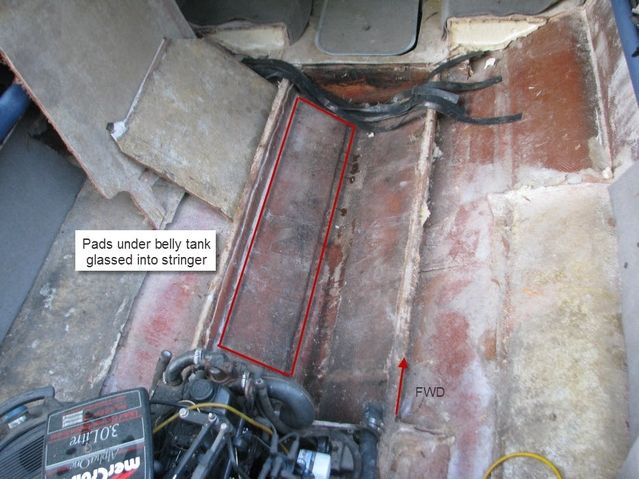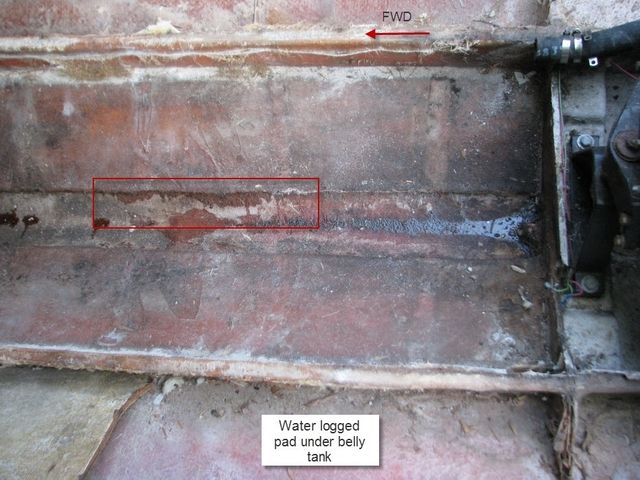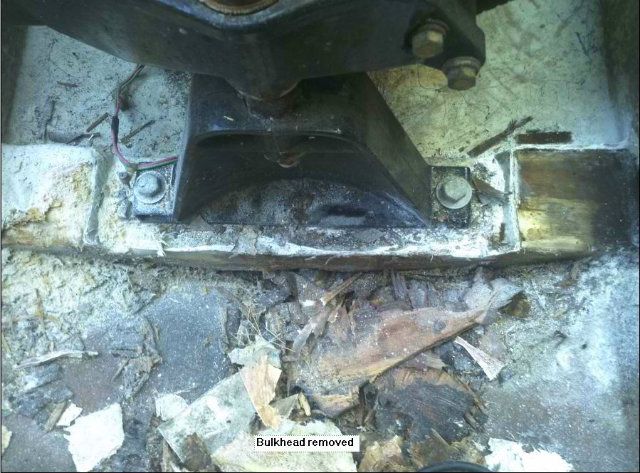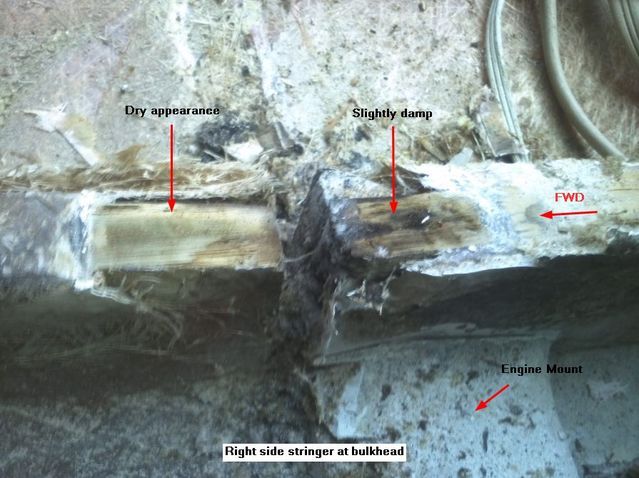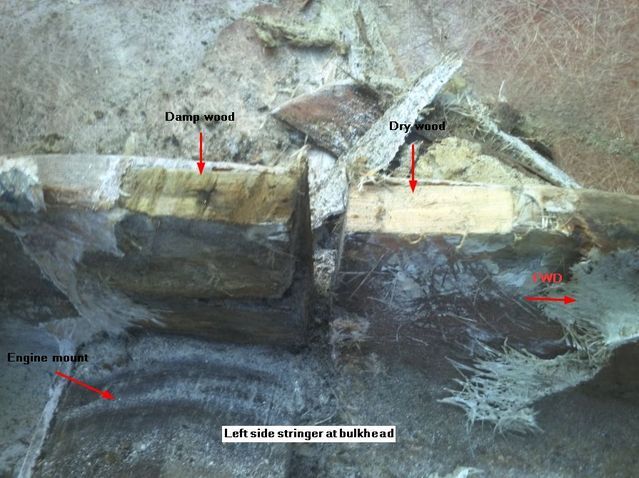So here's the unexpected project... A 1994 Bayliner 1952 Cuddy. I bought the boat with minor engine repairs needed (water pump, hoses, tune-up) and outdrive work. At the time there was also one little soft spot in the aft port side of the floor that I thought I should look at and after pulling the carpet...well...here I am.
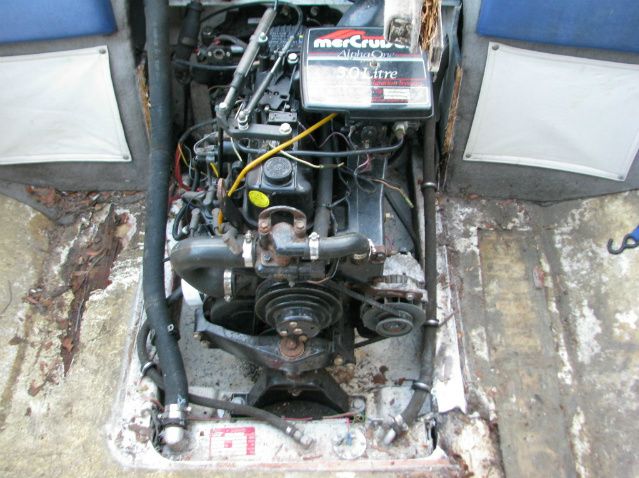
In the first pic I cut off the dog house at the floor using an oscillating cutting tool. I wanted to get closest to the floor as possible so that measuring a new one to build would be easier. First time using one and its pretty nice! It goes through cutters quicker than I thought but it did exactly what I needed. The next tool to cut the floor was a Dremel Trio. That thing is great! It's like a router that is used like a jigsaw. I set the height a little shorter than the floor thickness then ran with it. I'm not trying to advertise but I haven't seen anyone list what they used to do this job and it took me a little while to shop around for something. After taking out a section of the floor the aft section turned out to be really soaked. I used a couple different sized crowbars (medium and mini) to hook and pull the foam out trying not to apply direct pressure onto the hull. One thing I noticed was the rotted bulkhead going from left to right at the fwd engine mount.

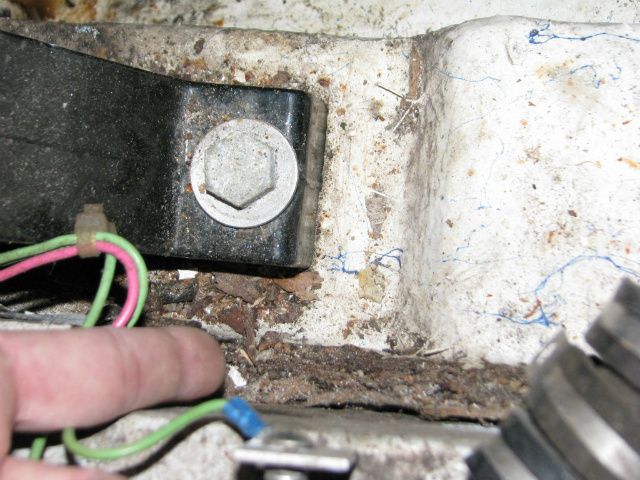
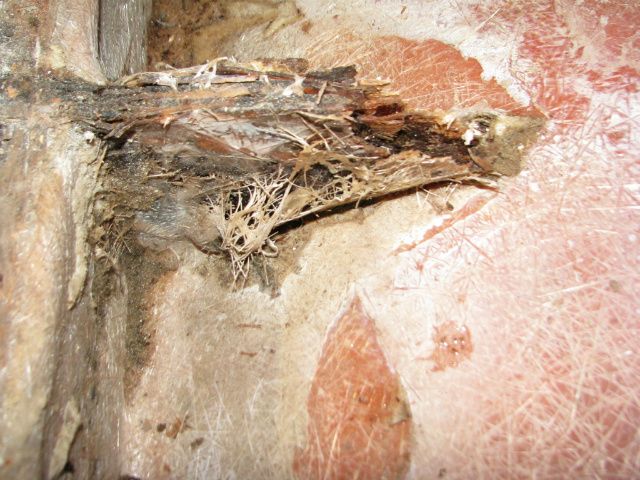
The rotten bulkhead is making me worried that the engine mount is also rotted since the bulkhead sits against it and both are gel coated in together. As I'm going fwd towards the seats I'm still finding slightly damp floatation foam.
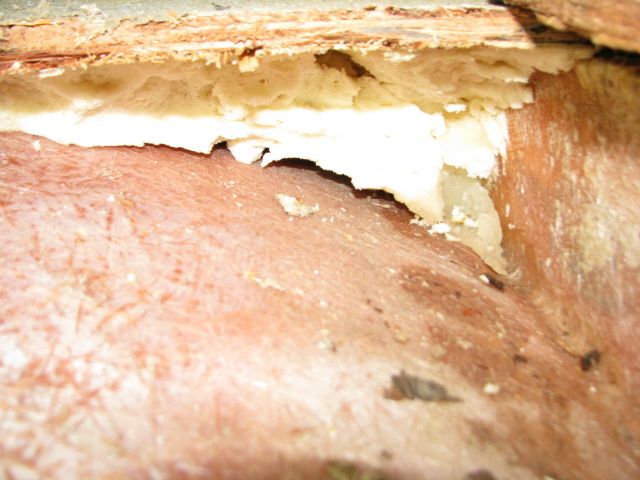

From what I hear, cutting those seat boxes from the floor is really going to be a bear. So I guess I'm looking for a path forward. I think I'll have to pull the tank and replace the bulkhead and core sample the engine mount? I was told to not worry about the stringers due to the fact that Bayliner engineered the strength of the stringer in the actual glass layup itself and not in the foam core. Opening up the stringer to dig out foam and repairing what was opened up might actually degrade the structural integrity. I have a feeling this is going to be quite the job doing it in an apartment complex parking lot.

In the first pic I cut off the dog house at the floor using an oscillating cutting tool. I wanted to get closest to the floor as possible so that measuring a new one to build would be easier. First time using one and its pretty nice! It goes through cutters quicker than I thought but it did exactly what I needed. The next tool to cut the floor was a Dremel Trio. That thing is great! It's like a router that is used like a jigsaw. I set the height a little shorter than the floor thickness then ran with it. I'm not trying to advertise but I haven't seen anyone list what they used to do this job and it took me a little while to shop around for something. After taking out a section of the floor the aft section turned out to be really soaked. I used a couple different sized crowbars (medium and mini) to hook and pull the foam out trying not to apply direct pressure onto the hull. One thing I noticed was the rotted bulkhead going from left to right at the fwd engine mount.



The rotten bulkhead is making me worried that the engine mount is also rotted since the bulkhead sits against it and both are gel coated in together. As I'm going fwd towards the seats I'm still finding slightly damp floatation foam.


From what I hear, cutting those seat boxes from the floor is really going to be a bear. So I guess I'm looking for a path forward. I think I'll have to pull the tank and replace the bulkhead and core sample the engine mount? I was told to not worry about the stringers due to the fact that Bayliner engineered the strength of the stringer in the actual glass layup itself and not in the foam core. Opening up the stringer to dig out foam and repairing what was opened up might actually degrade the structural integrity. I have a feeling this is going to be quite the job doing it in an apartment complex parking lot.




















